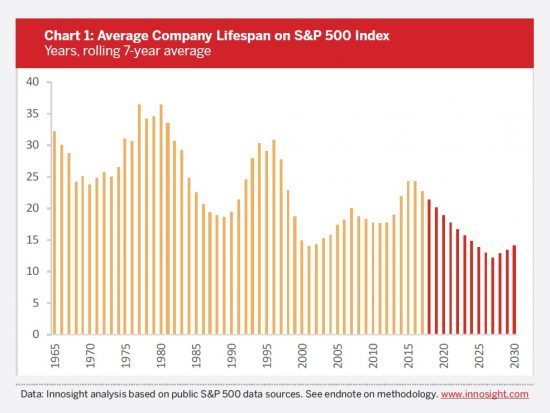In considering a brand's ability to garner greater employee commitment and customer engagement, it's obligatory to talk about the power of emotion. Share on X Yet, so many company executives shun the topic and/or hide behind a wall of “utter” professionalism. In an article penned by Dev Patnaik, CEO of Jump Associates, “Innovation Starts with Empathy“, he described how “we’ve created a corporate world that strives to eliminate the most human elements of business. Companies systematically dull the natural power that each of us has to connect with other people.” The new Khyber Pass of branding is knowing how to mix personal with the professional. Share on X
Don’t take it personally?
There’s little more silly in business than to couch criticism of an employee’s work with the words: “Don’t take this personally...” Employee engagement comes from personal conviction and involvement. Employee engagement comes from personal conviction and involvement. #engagement #emotion Share on X Moreover, it’s the emotional connections to a brand that drive brand equity. Marketing’s magic resides in the intangible attachments of customer to brand, driven by subconscious recall and feelings, powered by the thrill of the unexpected and the non-binding association with a de facto value system.
Prioritising Emotion and Employee Engagement
Brands (companies) that are geared toward shareholder returns are bound to seek better and better efficiencies. And we all agree that we want profitability. In the short-term oriented and supremely rational world of business, the analytical mind is will not accept initiatives bereft of a decisive ROI. Inevitably, the “loosey goosey” elements of marketing that pander to the emotions get short-changed. It is not that such “rational” strategies don’t work. It is just that, in my opinion, they do not provide a sustainable model. It’s akin to squeezing out all the juice from a fruit. As evidence, I refer to the speed with which companies in the S&P500 are churning over. A 2018 Innosight study anticipates that the lifespan will decrease from 24 years in 2016 to 12 years by the year 2027 (noting that would be a strong reversal from recent trend as it’s actually been on the rise in the last few years).

Innosight 2018
Customer loyalty without employee loyalty?
Should a brand pursue customer loyalty without first establishing employee engagement and loyalty? Share on XIt’s remarkable to see how companies often wish a certain behaviour from their customers that is not mirrored by their employees. Specifically, in today’s experience economy, the employee is, more often than not, responsible for the customer experience. Leadership needs to ask itself regularly: What is the fundamental reason getting the employee out of bed? Is it out fear, greed or habit? Or is it for some higher purpose that, without exaggeration, one might tear up if the brand disappeared? I call this the brand’s Moist Eye Index. The ability for the brand to make those involved shed a tear.

All companies can create that powerful, happy moment. A bank that approves your first loan. Shazam that finds that long-lost song you couldn’t put an artist’s name to. Lyft that hurries your pregnant wife to the hospital. Your insurance company that overlooks the small print to do the right thing… and reimburse you appropriately. As companies grow, they seem ineluctably to forget their main mission, thereby drying up the well.
Motivation via meaningfulness
Meaningfulness is the ultimate motivator. Share on X I believe that this holds true for all forms of business. Sure, working for a winning enterprise and making lots of money is exciting, but over time, it can become an empty quest. In the financial services industry, for example, I observe how often bankers and brokers jump from one company to another, chasing higher pay checks and/or a less horrid work environment. Their job has little meaning other than the quest for a bigger material gain. All too often, these individuals wake up late in life to the fact that their contributions are ephemeral and the company for which they work does not have a strong purpose. The implicit conclusion: I spent my career doing something unimportant to the grand scheme of things. Worse, one can see how, over and again, financially driven companies regularly put shareholder profits ahead of customer benefits, much less employee satisfaction. Yet, I feel that companies will gain longer-term if they know how to put more priority on upping emotion and investing in legitimate employee engagement. Share on X
Finding a genuine purpose
Many companies that you would think could have a legitimate and strong mission get blown off course. In a recent Freakonomics podcast, I was interested to hear that the pharmaceutical industry is not only the most hated and mistrusted industry of all, it is also the most charitable. As if, by allocating some resources to Environmental, Social, Corporate Governance (ESG) or Corporate Social Responsibility (CSR), pharma companies are mitigating some of their poor practices. To the extent, pharma is there to improve our health, its status as MOST HATED attests to the corruption of short-term profits. Pharma, among other industries, needs to revamp its model to return to a more genuine purpose. Otherwise, employees will always have the gnawing feeling within, far down on the moist eye index.
How many people work for a company that, when they describe what they do, they risk tearing up because it is so important and/or moving? I call this the moist eye index. Not that I suggest all companies need convert into philanthropic enterprises; however, companies that can create a purpose that gets your emotional juices flowing are likely to find their employees significantly more engaged and motivated. And that will materially contribute to creating a better customer experience.











